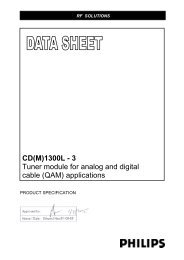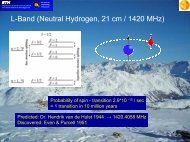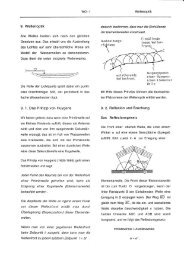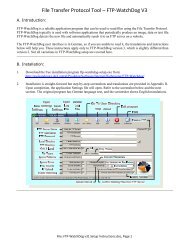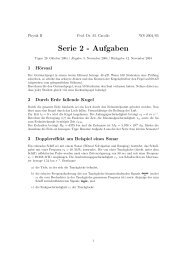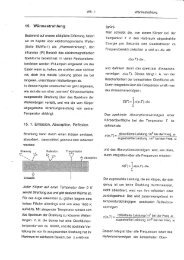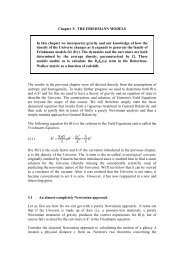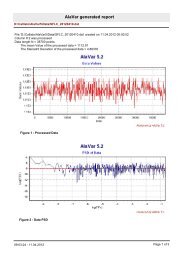here - Institute for Astronomy Umleitung
here - Institute for Astronomy Umleitung
here - Institute for Astronomy Umleitung
Create successful ePaper yourself
Turn your PDF publications into a flip-book with our unique Google optimized e-Paper software.
Title: Science Case<br />
Reference: MUSE-MEM-SCI-052<br />
Issue: 1.3<br />
Date: 04/02/2004<br />
Page: 41/100<br />
The following three features can be identified as clear signatures of very metal-poor or PopIII<br />
starbursts (primeval galaxies):<br />
• A larger Lyman continuum flux,<br />
and a continuum dominated by<br />
nebular emission, leading to a<br />
flatter intrinsic SED compared to<br />
normal galaxies.<br />
• For young bursts the maximum<br />
Ly α equivalent width increases<br />
strongly with decreasing<br />
metallicity from W(Ly α ) ~ 250-350<br />
Å at Z >~ 1/50 Z sun to 400-850 Å<br />
or higher at Z between 10 -5 and 0<br />
(Pop III) <strong>for</strong> the same Salpeter<br />
IMF. This is illustrated in Fig. 2-22<br />
considering also various IMF at<br />
low metallicity.<br />
• Strong HeII recombination lines<br />
(1640, 4686 Å) are a quite unique<br />
signature due to hot massive main<br />
sequence stars of PopIII/very low<br />
metallicity. Significant HeII<br />
emission is, however, only<br />
expected at metallicities below 10 -5<br />
solar (figure 2-21).<br />
Figure 2-22: Predicted Ly α equivalent widths <strong>for</strong> bursts of<br />
different metallicities and IMFs (from Schaerer 2003).<br />
The squares are <strong>for</strong> IMF 50-500Mo, the triangles 1-<br />
500Mo, and the circles 1-100 Mo. The various curves<br />
correspond to increasing metallicity from top to bottom.<br />
The second characteristic could also be<br />
found in AGNs, but enough spectral<br />
resolution (R>1000) will allow to<br />
distinguish between the two possibilities.<br />
With the help of the Table 4 from Schaerer<br />
(2003), the Ly α line emission can be<br />
estimated, <strong>for</strong> a constant star <strong>for</strong>mation of<br />
SFR= 2 M sun .yr -1 , and a photon escape<br />
fraction of 0.5, with an assumed<br />
metallicity of 10 -3 solar (and a non<br />
extreme, intermediate, IMF), to be 4 10 42<br />
erg.s -1 , corresponding <strong>for</strong> a proto-galaxy at<br />
z=7, to the line flux of about 2 10 -17<br />
erg.s -1 .cm -2 .<br />
For the HeII 1640 line, the line luminosity<br />
in the same conditions is 10 39 erg/s, and<br />
will give a flux of about 10 -20 erg.s -1 .cm -2 ,<br />
<strong>for</strong> a redshift z=5. This last line will be too<br />
faint to be detectable. However, at even<br />
Figure 2-23 : Predicted hardness as a function of<br />
metallicity <strong>for</strong> starbursts between PopIII and normal<br />
metallicities (from Schaerer 2003). The 3 curves are <strong>for</strong><br />
the 3 different IMF indicated (Mup= 100 or 500Mo,<br />
Mlo=1 or 50Mo)




